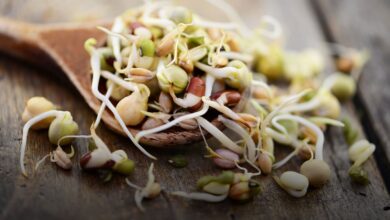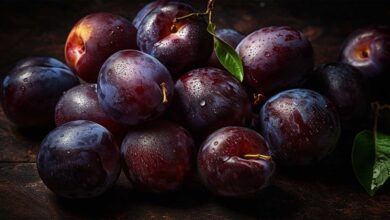Everything you need to know about tea in 5 minutes: benefits, families and preparation

Since the discovery of tea by Shen Nung more than 4,000 years ago, mankind has always been interested in its medicinal properties. However, its properties depend on its quality. A healthy, rich environment, young shoots, natural cultivation method and good manufacturing conditions are the keys to a tea that is “packed” with active ingredients!
Although the first traces of tea plants were found in the Yunnan region of China, the original tea plants can still be found today in the Yen Bai Mountains of Vietnam. China and India remain the major tea producing countries, but tea is also grown in many Asian and African countries.
Briefly
- Varieties and Virtues: White, green, black and oolong teas all come from the same plant, Camellia sinensis, but have different properties. For example, green tea is rich in polyphenols and black tea is a good stimulant.
- Composition of tea leaves: Tea leaves contain tannins, alkaloids such as theanine, amino acids and vitamins. These ingredients provide various health benefits;
- Importance of Organic Tea: Choosing organic tea is crucial to avoid harmful residues and contribute to protecting the environment and farmers.
Buy tea at the best prices
Amazon Affiliate Link. Prices mentioned in this article are indicative and subject to change.
Camellia sinensis, countless varieties and virtues
White, green, black and oolong teas are all types of the same plant: Camellia sinensis. Fresh leaves are treated differently and undergo transformations that modify their flavors, but also their properties. Thus, each family of tea has its own virtues.
- White teaWith low fig content, it develops delicious flavours. It cools and lowers body temperature.
- Green teaUnfermented, it is very popular due to its high concentration of polyphenols, iron, vitamins and catechins, which give it numerous health benefits. It is a refined drink.
- Black teaIt warms the body, as it is fermented. The theine it contains makes it a very good tonic.
- Oolong teawhich is a nice compromise between green tea and black tea, will have a slimming and relaxing effect.
- Bouira, a post-fermentation tea with a special and desirable taste, recognized in the Chinese Pharmacopoeia for its benefits on digestion, getting rid of cholesterol, etc. To facilitate transportation, this tea was originally pressed, into various shapes: bricks, nest (tuocha, literally “tea nest”), pancakes.
Tea leaves: a cocktail of benefits
A tea leaf consists of three-quarters of water, and the remaining quarter contains mainly:
- Tannins (or polyphenols), which are powerful antioxidants;
- Alkaloids, including theine, which gives bitterness, stimulates the central nervous system, and helps destroy fats;
- Amino acids (proteins), including theanine, which help relax and revitalize;
- Vitamins, including vitamins C (unfortunately fragile to heat), A, B1, B2, B6, B9, E and K;
- Minerals: fluorine, potassium, calcium, magnesium, zinc, manganese.
Beneficial effects for the pleasure of the senses…
Tea analyzes are carried out on a regular basis and it seems clear that this plant still holds many surprises for us. Climate changes and development of cultivation techniques also add modifications to the composition of tea leaves.
The style of taste and the happiness you feel when tasting tea takes its place. By tasting each tea, the tea lover discovers its pleasures and virtues and learns to recognize its specific benefits.
Tea, does it have any harmful effects?
As with food, it is also important to know your body and adapt your consumption to it. For example, some people who have difficulty absorbing iron may benefit from avoiding tea with meals.
The level of thine varies depending on the quality and type of tea, and it is also recommended to adapt its consumption to each time of the day or the desired effect!
Organic tea: what are the health benefits?
When choosing tea, it is essential that it is high quality and organic, as it is not washed at any stage of the manufacturing process. Therefore, it deserves our full attention!
Organic tea has a double advantage. Infusion free of harmful residues allows you to benefit from the health benefits of tea while contributing to the protection of the environment and those who grow it. In fact, toxic compounds used in conventional agriculture not only affect pollination and soil depletion, but also pose a health risk to consumers and farmers.
Choose it carefully and return it
Tea is chosen instinctively, depending on the mood, season and time of day. Preparing it is simple. However, you must respect the infusion time and temperature and prefer spring or filtered water.
Preparation tips
Boil the teapot, then place the tea in a paper filter or teapot filter. The temperature and infusion time vary for each tea. For delicate teas, such as white or green tea, a quick and easy brewing method is to cover the leaves with cold water before pouring in the boiling water. Pu'er, most green and white teas are steeped several times.
Dosages : Use 4 teaspoons of tea per liter of water (up to 6 if the leaves are large).
From leaf to cup, tea has many variations, both in terms of the tastes, flavors and aromas it develops, and in terms of the benefits it provides. Tea time, which we take to ourselves, is a simple and healthy pleasure, to be enjoyed throughout the seasons!
On the same topic

(tags for translation)Camellia sinensis
Everything you need to know about tea in 5 minutes: benefits, families and preparation


